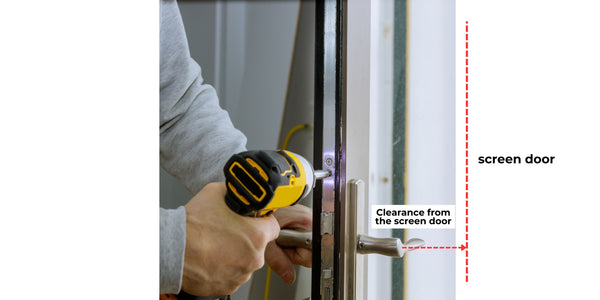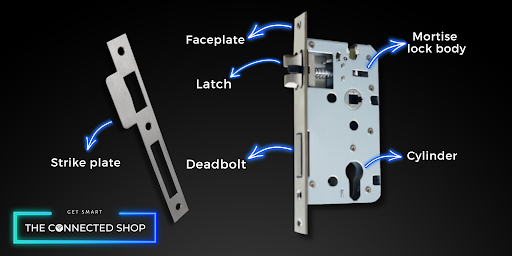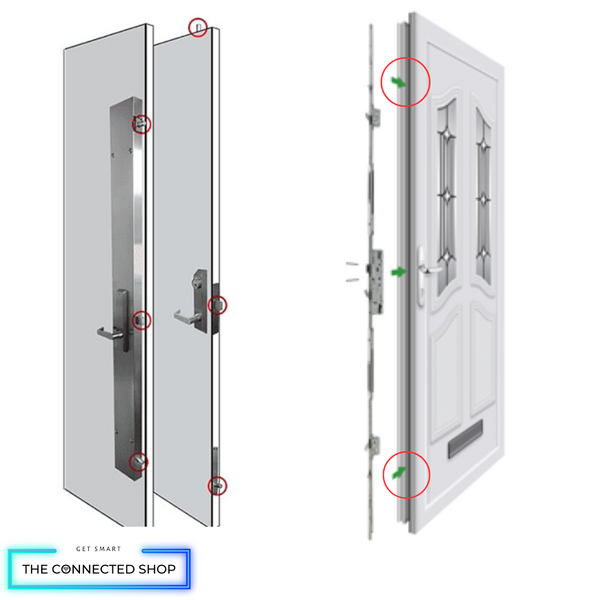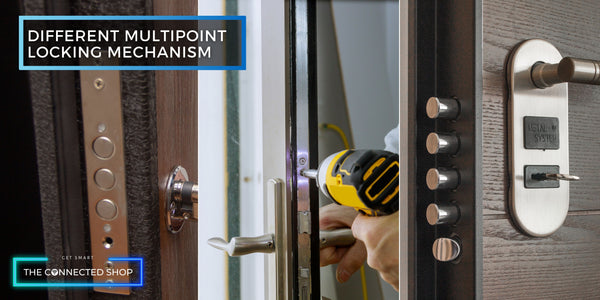Your Guide to Smart Home Terminology: The Ultimate Glossary for Connected Locks
Welcome to your ultimate guide for navigating the world of smart home technology, specifically focusing on the terminology associated with connected locks. In this article, we will unravel the complex jargon surrounding this innovative aspect of modern living, ensuring you are well-equipped to make informed decisions about securing your home with confidence. Whether you're a tech enthusiast or a homeowner looking to embrace the convenience of smart locks, this comprehensive glossary will be your go-to resource for all things related to connected locks.
Common Door Lock Terms
Getting into the realm of smart door locks can be both fascinating and practical, but it often comes with a vocabulary all its own. To help you unlock the mysteries of this essential aspect of home security, we present a concise guide to common door lock terms. From deadbolts to cylinders, latch bolts to keyways, this introductory glossary will shed light on the terminology you need to understand when selecting, installing, and maintaining the locks that safeguard your home.
Adjustable Latch - this means the latch can extend to a maximum measurement (ie adjustable latch of 60mm-70mm allows the latch to be extended until 70mm).
Clearance from the screen door - actually refers to the distance of the gap between your main door and screen door when both are closed. This is especially significant for sliding doors that have a screen door installed. (see photo below)

Particular scenario is when a customer is looking for a smart door lock for sliding doors with screen doors installed outside. Identifying the clearance from the screen door to the handle is significant so it won’t pose any installation issues and usage problems.
Deadbolt - The deadbolt lock has a bolt that must be activated by a key or. thumb turn. It offers good security because it is not spring-activated and cannot be. “jimmied” opened with a knife blade or credit card.
Door edge-to-door handle measurement - you will consistently see this in our size inquiry form but this particularly refers to backset measurement. It is the distance from the edge of the door to the center of the borehole for the doorknob, lever, or deadbolt.

Door Jamb - one of the two vertical members forming the sides of a doorframe. It is usually referred to as a “door frame”. The side jambs keep the door in place, while the head jamb provides additional support and keeps the frame from buckling.
Door thickness - actually refers to the "door depth"; this is vital, especially in replacing an old lock mechanism with a smart door lock as they're smart door locks that only work in specific door depths. (see photo)

Two different smart door lock models can cater different door thickness. See photo below.

Key Cylinder - is the part of the door lock where you insert the key. Usually called only as “cylinder” or “lock body”.
Latch - a metal bar with a catch and lever used for fastening a door or gate. Latch comes in two variants: single latch (see photo below) and an adjustable latch.
Mortise - a pocket, recess, or hole cut through a piece of wood to make space for something else to fit into it. Can also be used as a "mortise lock mechanism".

Mortise width - the width of the mortise is identified from side to side of the mechanism
Mortise height - the height of the mortise is identified from the top to bottom of the mechanism

Multipoint lock - this is the type of mechanism that has three separate locks in place to ensure maximum security. The extra locking points provide a tighter seal along the length of the door. There are different types of multipoint lock settings, some come as extra shoot bolts at the top and bottom, some look like a usual deadbolt along the length of the door.

Another type of multipoint lock is the one that does have multiple deadbolts. This type ensures that the door won’t be easy to be jimmied with compared to the usual single deadbolt and latch option.
Strike Plate - also known as “face plate”, it is a metal plate that is affixed to the doorjamb and has a hole (or holes) that accommodate the lock bolt
Smart Door Lock Technical Terms
Clutch - The clutch is a crucial part of a smart door lock, allowing it to lock and unlock smoothly. It's like the heart of the system, making sure the lock works properly. Clutches can be set for two directions: both right and left as it synchronizes with the handle direction for easy use.

Cutting Template - a form or pattern used as a guide so you can accurately create the mortise pocket on your door.
Mechanical Key - is a physical means of unlocking a door or access point. It consists of a precisely shaped piece of metal that aligns with the internal components of a lock, allowing it to turn and operate the locking mechanism.
Passcode - a string of characters used as a password to lock and unlock the smart door lock.
Passage Mode - this is a smart door lock feature that allows you to temporarily turn off the auto locking and unlocking of the smart door lock. This is used when you need to enter and exit your home multiple times, and do not want the door to auto lock.
Remote unlocking - refers to the process of unlocking a door from a remote location using technology such as a smartphone. In integration with smart door locks, remote unlocking features allows users to remotely unlock/lock the door even if they're in a different location.
Smart Lock Timeout - this happens when you miss inputting the passcode or logging in the fingerprint to access the smart lock. Timeout takes at least 1 minute before you can try keying again.
WiFi Gateway - a device that combines the purpose of both a modem and a router. In integration with the smart door locks, the WiFi gateway acts like a bridge between the smart door lock and the mobile device.

In conclusion, understanding the terminology associated with smart door locks is essential for anyone concerned with home security, whether you're a homeowner, a locksmith, or simply interested in the field. From the convenience of remote unlocking to the reliability of mechanical keys, each term plays a crucial role in safeguarding properties and controlling access.
By familiarizing yourself with these terms, you empower yourself to make informed decisions when selecting, installing, and maintaining door locks. Whether opting for the latest in smart lock technology or sticking with traditional mechanical solutions, knowing the language of door security ensures you can effectively protect your home or business.
1 comment
awesome stuff to learn on smart locks




